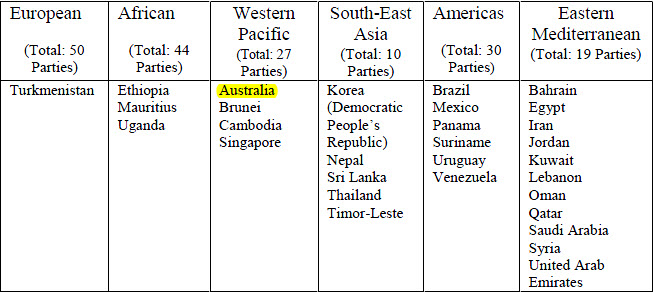
Experts ask WHO to take a more positive approach to tobacco harm reduction
Posted on October 6, 2018
Over 70 leading international experts in nicotine science, policy and practice have written to the World Health Organisation (WHO) (here) asking it to adopt a more positive approach to tobacco harm reduction with safer nicotine products. Four Australian experts are among the signatories.
Reduced-risk nicotine products such as vaporisers (e-cigarettes), Swedish snus and heated tobacco have the potential to bring the epidemic of smoking-caused death and disease to a more rapid conclusion.
The letter suggests smokers who cannot or choose not to quit smoking or nicotine should:
‘have the option to switch from the highest risk products (primarily cigarettes) to products that are, beyond reasonable doubt, much lower risk than smoking products’
Australia has been particularly slow to recognise and accept the public health benefits of tobacco harm reduction and is falling further behind other western countries. According to WHO, the following countries which ban vaping are (June 2018):

Vaping is legal and freely available in the UK, US, European Union, Canada and New Zealand... but not in Australia.
WHO is reviewing its policies on tobacco control at the 8th ‘Conference of the Parties’ meeting (COP8) in Geneva, Switzerland this week (1-6 October 2018).
The letter makes the following main points:
- Tobacco harm reduction is an integral part of tobacco control.
- From a health perspective, the major distinction between nicotine products is whether they are combustible or non-combustible.
- Tobacco harm reduction is officially mandated and endorsed in the WHO health treaty, the Framework Convention on Tobacco Control (Article 1d).
- Appropriate weight should be given to the benefits and opportunities of tobacco harm reduction, not just risks.
- Youth uptake of any tobacco or nicotine product can and should be addressed by careful policy making.
- Uncertainty about long-term effects should not be a reason for paralysis.
- The approach to safer nicotine products should embrace “risk-proportionate regulation”.
- WHO should take care to avoid the harmful unintended consequences of prohibitions or excessive regulation.
Click here to download the letter
Financial Times coverage Campaigners urge WHO to give vaping a chance.